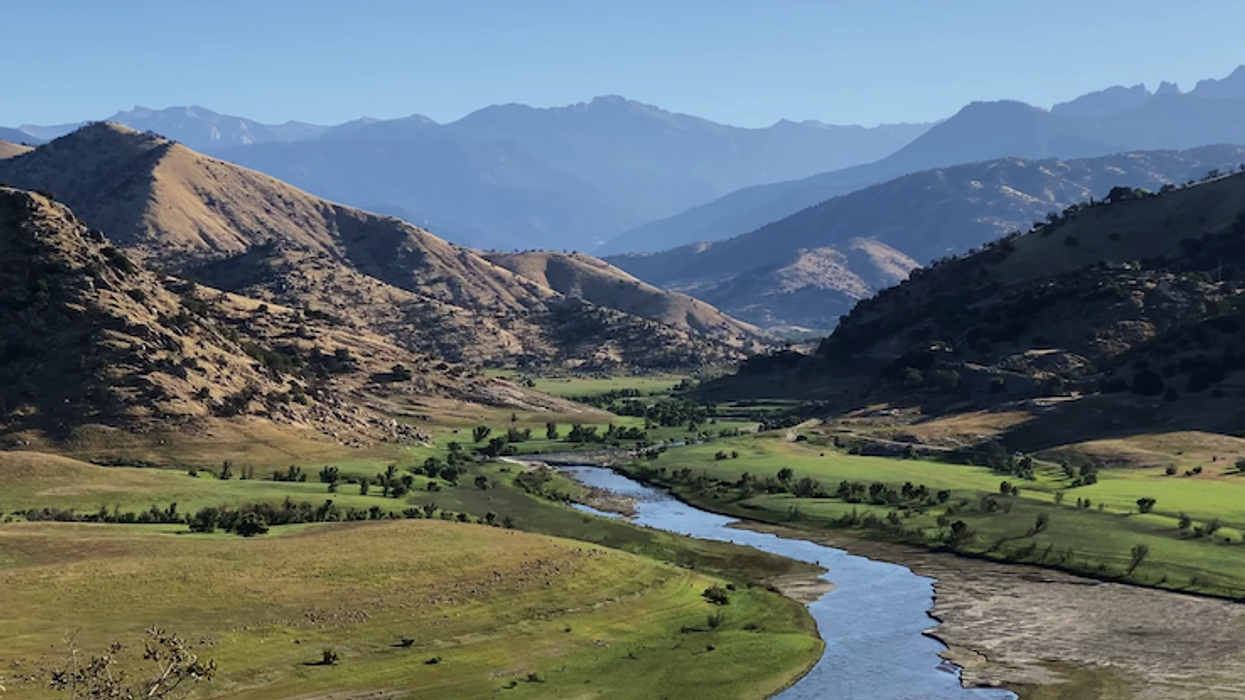How You Can Get Cinematic Footage With the iPhone 11 Pro (Without a Gimbal or FiLMiC Pro)
Can we shoot more cinematic footage with the iPhone 11 Pro? This video proves that, yes, we can.

When the iPhone 11 Pro was announced earlier this month, we were all very anxious to see how the next iteration of Apple's smartphone would fare as a filmmaking tool.
With not one, not two, but three cameras -- including a telephoto, wide, and ultra-wide -- it seemed as though filmmakers would be able to capture 4K video on their mobile devices in a way they never had before. But the question still remained: Will the iPhone 11 Pro allow us to shoot more cinematically than its predecessors?
Before I prattle on about what exactly makes footage cinematic, take a look at this video from L.A.-based director/DP Matteo Bertoli, who shot some truly beautiful test images using the iPhone 11 Pro Max. Bertoli also details his experience using the smartphone in a post he wrote for us yesterday.
Perhaps the biggest change to the iPhone's camera design is its three-camera system, namely that ultra-wide lens. In fact, that's the feature director Rian Johnson called a "real game-changer" when he shot some test footage in Paris several days ago.
After testing the smartphone's cameras in Sequoia National Park, Bertoli wrote about his experience, echoing Johnson's sentiment, but goes further in pointing out several features that he found particularly helpful when pushing the iPhone 11 Pro to its cinematic limits, like Night Mode's extended dynamic range, image stabilization, better rendering of skin tones, and the ultra-wide's lack of sharpness...yeah...that's not a typo, gang. He says:
Now, let’s talk about that ultra-wide-angle camera because this is the main difference from any other iPhone. To begin with, the ultra-wide-angle camera is not sharp, at all. And this is why I love it so much.

In fact, I found myself using the ultra-wide-angle lens for the vast majority of the time because it almost seems to have a diffusion filter in front of the lens. The other two cameras, on the other hand, are incredibly sharp, too much in my opinion. With that said, the ultra-wide-angle lens has way more noise in low light and interior and I wouldn't recommend it in those situations. But I have to say, I absolutely love it and it opens up tons of opportunity for creators since you can literally capture everything with that 13mm focal length.
Bertoli goes on to say that though he intended to use FiLMic Pro to capture his test footage, the app wasn't working properly for him (he says, however that "the new version is gonna be incredible"). This is a pretty big deal, considering the app is almost a prerequisite for capturing "cinematic" footage with a smartphone... what with all of the added control over camera settings like ISO, frame rate, and shutter speed. Filmmakers like Sean Baker, Steven Soderbergh, and more used the app on their projects, so, there's that.
Bertoli didn't use a gimbal, didn't use FiLMic Pro, and still managed to come away with this great footage. How?
Well, there are several things at play here, and before we jump to say that the iPhone 11 Pro shoots cinematic footage, it's important to identify the elements that contribute to that aesthetic.
- Stabilization: Shaky footage screams amateur video, so stabilizing footage is key if you want to capture the "film look". Though Bertoli didn't use a gimbal, he did use a Shoulderpod to keep his iPhone steady.
- Slow-Mo: Slow-mo footage is very popular right now and has become a signifier of "cinematic" footage. Bertoli shot his footage at 60 fps; this isn't incredibly slow, but it's something.
- Lighting: Shooting outdoors can be difficult, especially with smartphones. Poor dynamic range creates lots of hotspots and, of course, the difficulty of dealing with an overexposed background or underexposed subject, but if you're able to properly expose and use light creatively -- like Bertoli did -- then the quality of your footage will increase dramatically.
- Color Grading: LUTS are incredibly useful for applying a "cinematic" color grade to your footage. Bertoli used his new BUTTERY LUTs to grade his footage.
Editing is also important to factor in here. Even though this piece focuses heavily on the cinematic look of the footage, it's important to also go over the cinematic workflow of the footage.
And that's one of the big missing pieces in smartphone filmmaking -- adopting really intuitive, easy-to-use, and very powerful mobile editing software. Bertoli mentions LumaFusion, which is one (if not the) most popular mobile editor, and how he's looking forward to the company releasing an update that "will allow us to import the files directly from an external SSD... that will be revolutionary!"

That "cinematic" aesthetic isn't achieved by using a certain camera, though, gang. It's used by employing certain cinematic techniques: Proper exposure, lighting, camera movement, color grading, and a host of other things. The iPhone 11 Pro gives you more focal lengths to choose from and more latitude, but it's up to you to use them wisely.
A perfect example of someone who was able to do that is Bertoli.
Hopefully, you took some notes while watching his video.
Source: Matteo Bertoli Visuals












